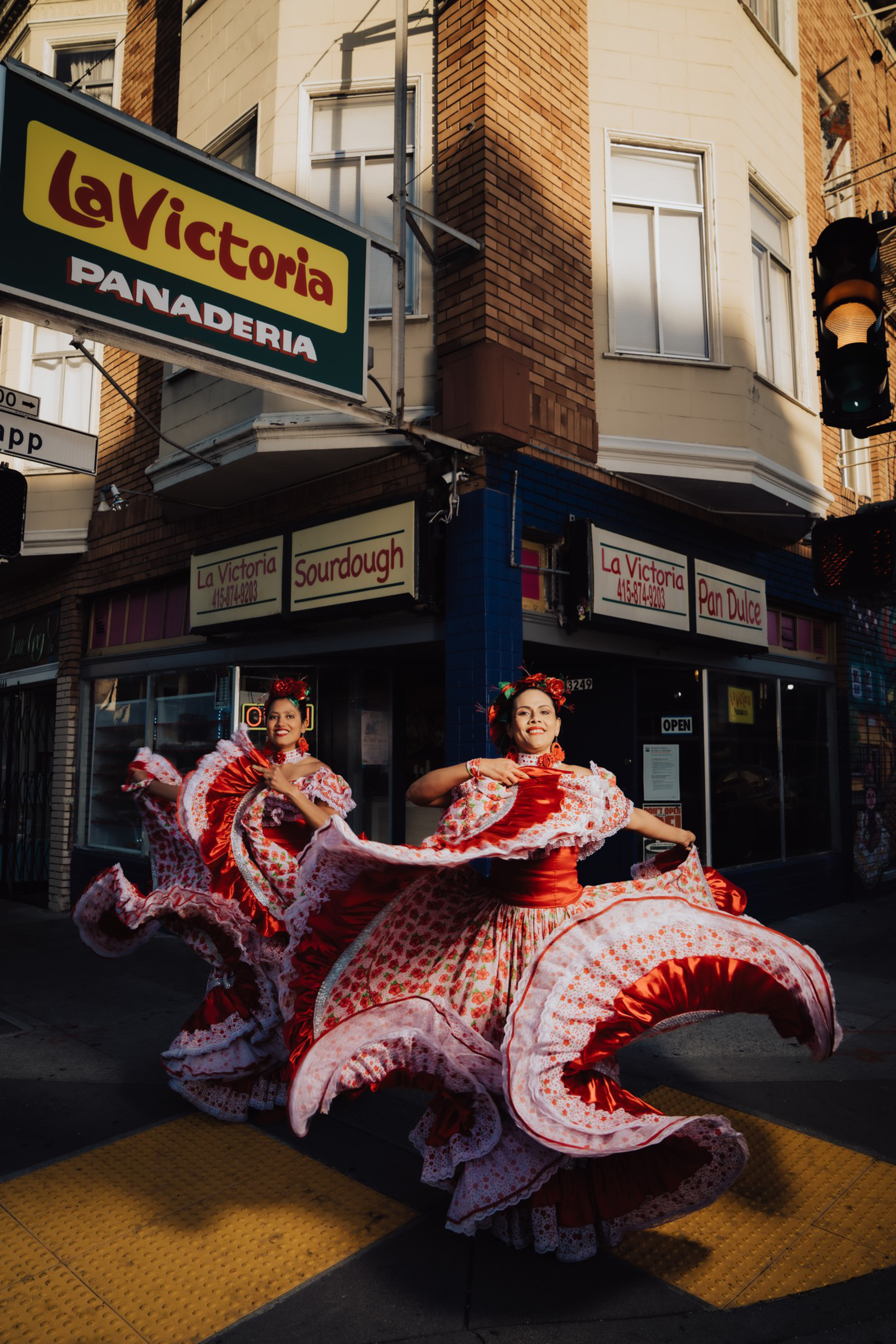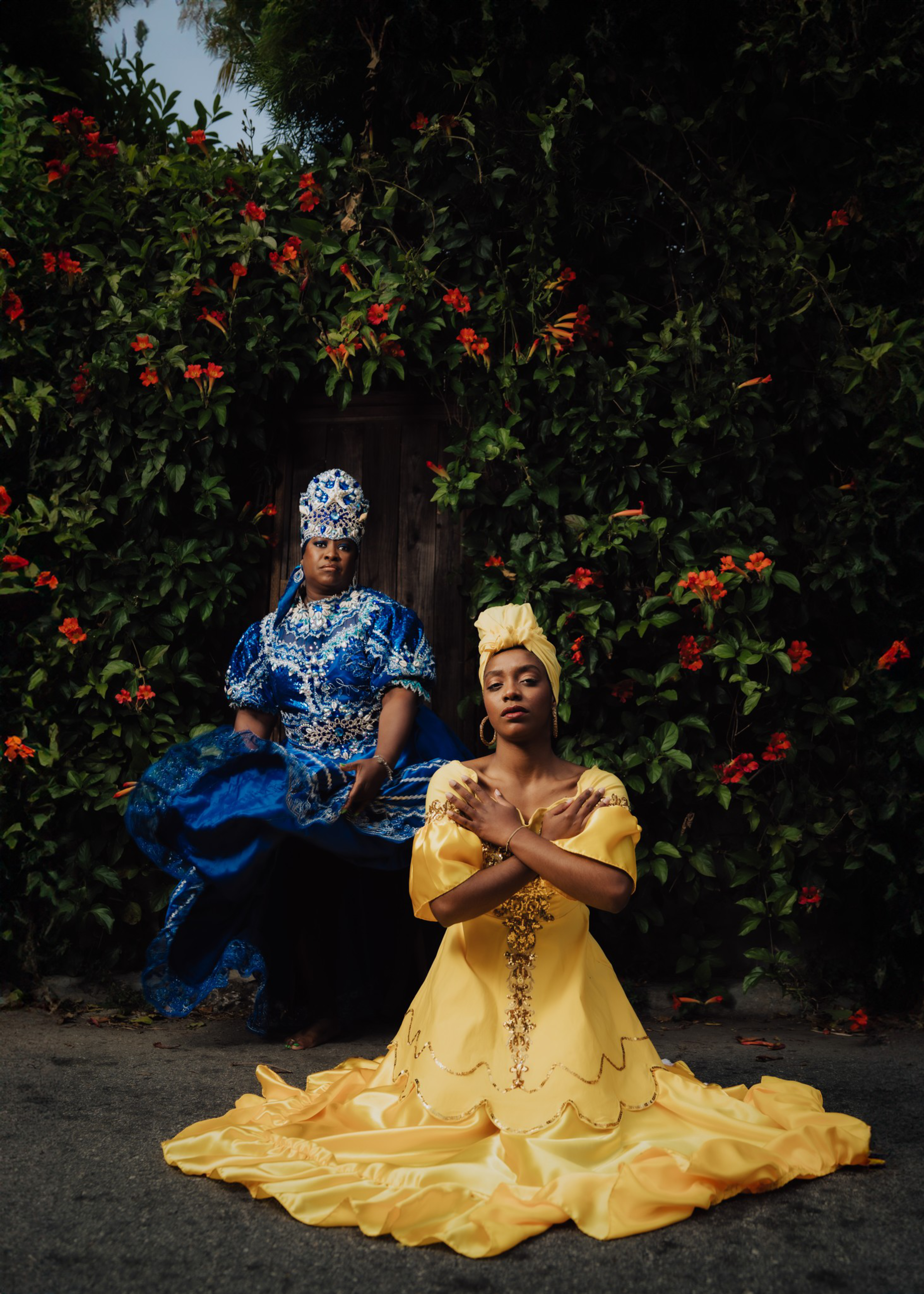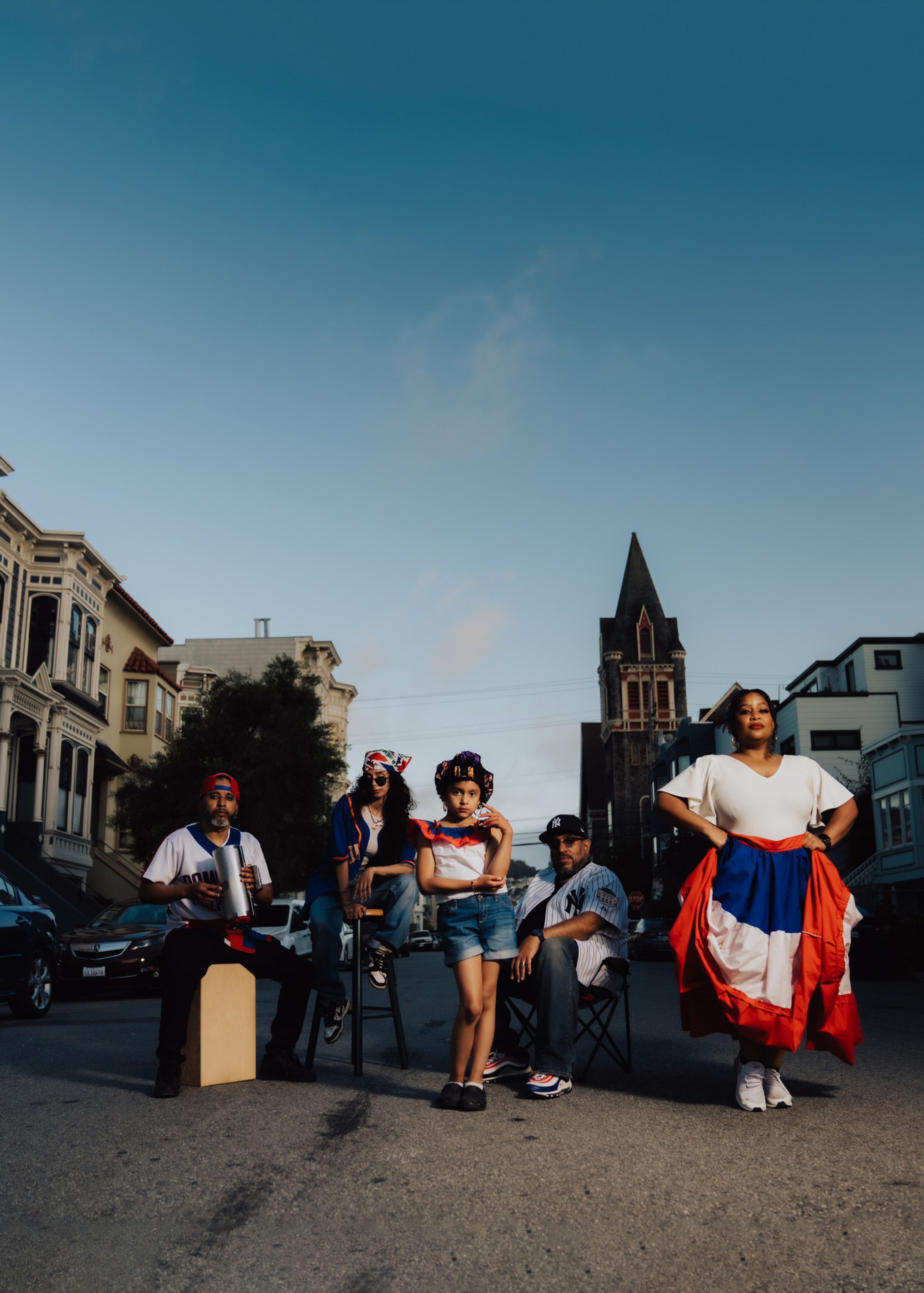The Wide Shot showcases the work of Bay Area photographers, their latest projects and the behind-the-scenes stories of how they got the shots.
As photographer Alexa LexMex Treviño rides her Vespa down streets in the Mission, she sees the beating heart of San Francisco’s Latin American culture pulsing all around, from vibrant mercaditos, to glorious magenta bougainvillea, to color-soaked murals that serve as a testament to her neighborhood’s history, identity, and resistance. And mostly, she sees people — powerful, proud, living beautiful lives in difficult times.
In the powerful portraits in her work “Existir es Resistir / To Exist is to Resist.” Treviño’s lens captures the people in her community wearing the clothing of their ancestors. Completed during her RAÍCES Fellowship with the local nonprofit Accion Latina, which supports Latinx artists in San Francisco, her photos showcase joy, warmth, and defiance — a reminder that this community refuses to be defined by outside forces.


Can you tell us more about your project?
It came from a deep need to show my community through a lens of power and pride. Too often, we’re only seen through our pain or struggle. I wanted to shift the focus to our strength, our beauty, and the radical act of simply being ourselves, especially in a time when our community doesn’t always feel safe just existing in public spaces.
As part of my RAÍCES Fellowship, I sought to document 33 individuals or groups to represent the 33 countries, territories, and occupied lands that make up Latin America. It was my way of honoring the diversity and complexity of our diaspora.
What do you hope others take away from it?
This project is my heart on display. It’s a way for me to honor the people and the neighborhood that helped shape me not just as a person, but as an artist. The Mission is where I found my voice, and I carry that with me in every photo I take.
More than anything, I hope folks see themselves in this work. That they feel held, remembered, and celebrated.



Why did you root the project in the Mission?
This neighborhood breathes ceremony. From the smell of copal from the danzantes blessing the streets, to protests led by the beat of Brazilian batucada — it’s where we just are.
The Mission is also shaped by migration. I wanted to capture how that diaspora lives in the details. The bougainvillea tangled with palm trees, the wrought iron on colorfully painted Victorians, the corner mercaditos with fruits from different homelands. These aren’t just backdrops, they’re part of our collective memory.
I’ve photographed this community through Carnaval, through protests, through tragedy and joy, and the quiet in between. If it weren’t for the Mission, I wouldn’t be the photographer I am today.



What is your favorite frame for your project?
It has to be Cuba, represented by Susana Arenas Pedroso, a maestra in Cuban dance, and her student Skarlet. We started out photographing on Lucky Street and 24th, right where El Nuevo Frutilandia used to be. That Cuban restaurant, now closed, had this iconic tropical pink wall, and it felt like the right place to begin.
Susana and Skarlet began to dance for the water goddess Yemayá, who is considered the mother of all things in Cuban Santeria. It was beautiful, powerful, and full of spirit. But looking at the background, the concrete wall, the cars lined up along the curb, it just didn’t hold the same energy. It didn’t feel like the right space for something so sacred.
So we walked further down the alley, and that’s when we found it. A house in the alleyway completely covered in vines and flowers. It felt like a floral offering in the middle of the concrete jungle. Susana began to dance again, framed by this greenery and a small wooden door, and everything aligned. The colors, the movement, the energy, it all came together.
I just hope the portrait I made captures even a fraction of what they gave me in that moment.
While she was dancing, an elderly woman peeked out of her home and smiled. She told us that watching them had brought joy to her day and to her life. That really stuck with me.
On the way back to my studio, we stopped to say hi to my 3-year-old sobrina (niece). As soon as she saw Susana and Skarlet, she lit up. Later that night, my brother-in-law called me because my sobrina couldn’t go to bed without hearing a goodnight from the mermaid queen. So of course, I had to pretend to be her on the phone.

Did you learn anything new about your neighborhood?
Yes, definitely. I’ve walked these streets hella times, but this project made me slow down and see the hood differently. I was really looking with intention. I started noticing things I hadn’t before, especially when chasing the golden hour light. And beyond the visuals, I felt a lot of love from the community. People would stop to show support while I was documenting. For Puerto Rico’s session, Pop’s Bar gave us “shots for the arts,” while Batey Tambó played the drums hard for the ancestors, and the phenomenal Julia Caridad Cepeda danced her heart out in the middle of the street. It was one of those unforgettable Mission moments.


What have your subjects’ reactions been like?
At the exhibit opening, I witnessed people tear up as they saw themselves on the walls, seen, honored, held in light. And I broke down, too, trying to explain what this work meant to me. How deeply personal it is to document community at a time when so many are living in fear, feeling targeted.
This project reminded me how beautifully diverse Latin America is, different countries, languages, traditions, music, and food and yet, beneath it all, the same beating heart. Every time I stepped behind the camera, I tried to reflect back the energy that was given to me. And people gave so much.
The closing reception of “Existir es Resistir / To Exist is to Resist” is next Friday, Oct. 17, from 6-9 pm at Accion Latina, 2958 24th St. in the Mission.

